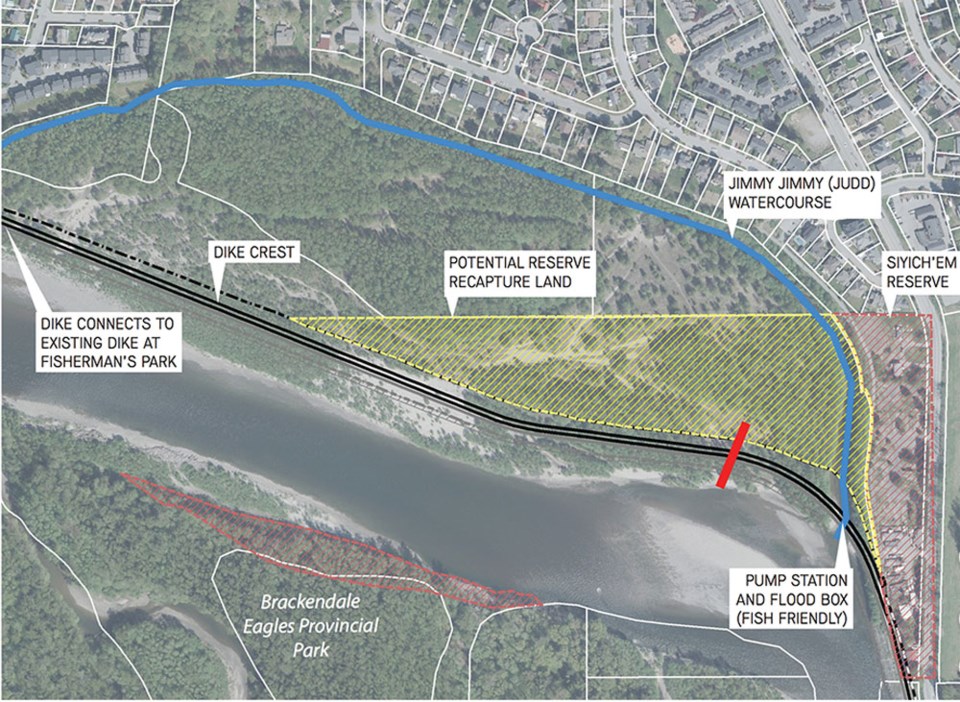The District of Squamish has approved a new dike alignment that could allow the Siyích’em Reserve to reclaim land by removing it from a flood area.
This would replace the existing Squamish River dike located along Eagle Run Drive and partially disconnect a large, forested gravel bar island from the Squamish River.
District council members voted unanimously in favour of pursuing this project during their Feb. 11 meeting.
The project, however, still needs approval from Squamish Nation council, which will be having a look at the project in the coming days.
Should the Nation give its blessing, authorities will begin making detailed designs for the project.
“The option we are choosing here is not without its challenges,” said Mayor Karen Elliott.
“But, to me, it also makes sense.”
Council’s choosing the alignment, dubbed ‘Option C,’ represents the priciest and perhaps the riskiest of the options presented by municipal staff, but it could also be the one with the most gains.
This proposal seeks to construct the dike on a new alignment heading northwest from Siyích’em Reserve, set back 30 metres from the Squamish River bank, and connecting to the existing dike at Fisherman’s Park.
To the south, the District will also raise the dike at the Eagle Viewing area.
Back when it was surveyed in 1881, the Siyích’em Reserve had 68 acres of land. But today it has an area of 9.8 acres.
This is due to an array of factors, including historic diking, logging practices, river engineering and works, and erosion.
The area is also considered at-risk, as flood levels were within half a metre of the dike crest during the 2003 flood, and there was significant seepage through the structure.
During the presentation to council, Amir Taleghani of Kerr Wood Leidal Associates told council that the project would cost at least $60 million, with that figure expected to rise once seismic upgrades were included.
“I thought I was freaked out by the firehall increasing budget,” Coun. Doug Race said with a chuckle.
It was also identified as the option most likely to receive grant funding from higher levels of government and the most likely to garner support from the Squamish Nation.
The other two options, A and B, would cost $47 million to $54 million before seismic upgrades were added in.
The first would’ve built a retaining wall along the present landside of the dike.
The second would raise the land on Siyích’em Reserve up to the dike crest elevation, forcing the removal and replacement of at least some existing structures on the reserve.
District staff identified those two options as undesirable to the Squamish Nation.
However, those options would have the least environmental impact.
With Option C, there would be a risk that Fisheries and Oceans (DFO) or Ministry of Forests would not give permits for the work.
“I think when you consider the choices between [Options] A, B and C, there really is only one choice,” said Race.
“I think our partner in this [the Squamish Nation] has reasons, and I think we have to respect those reasons for not being too keen on [Options] A and B — fair enough.”



